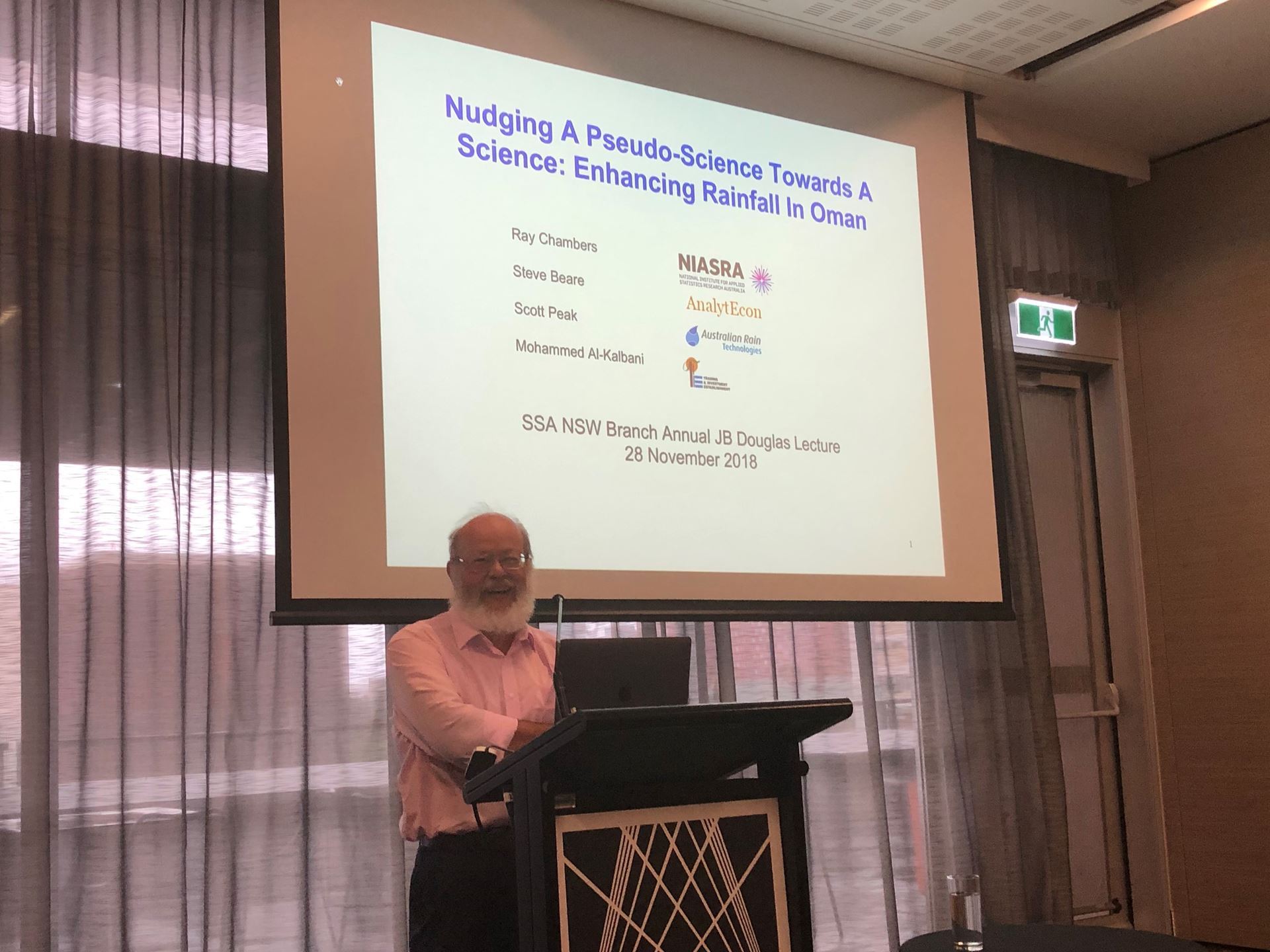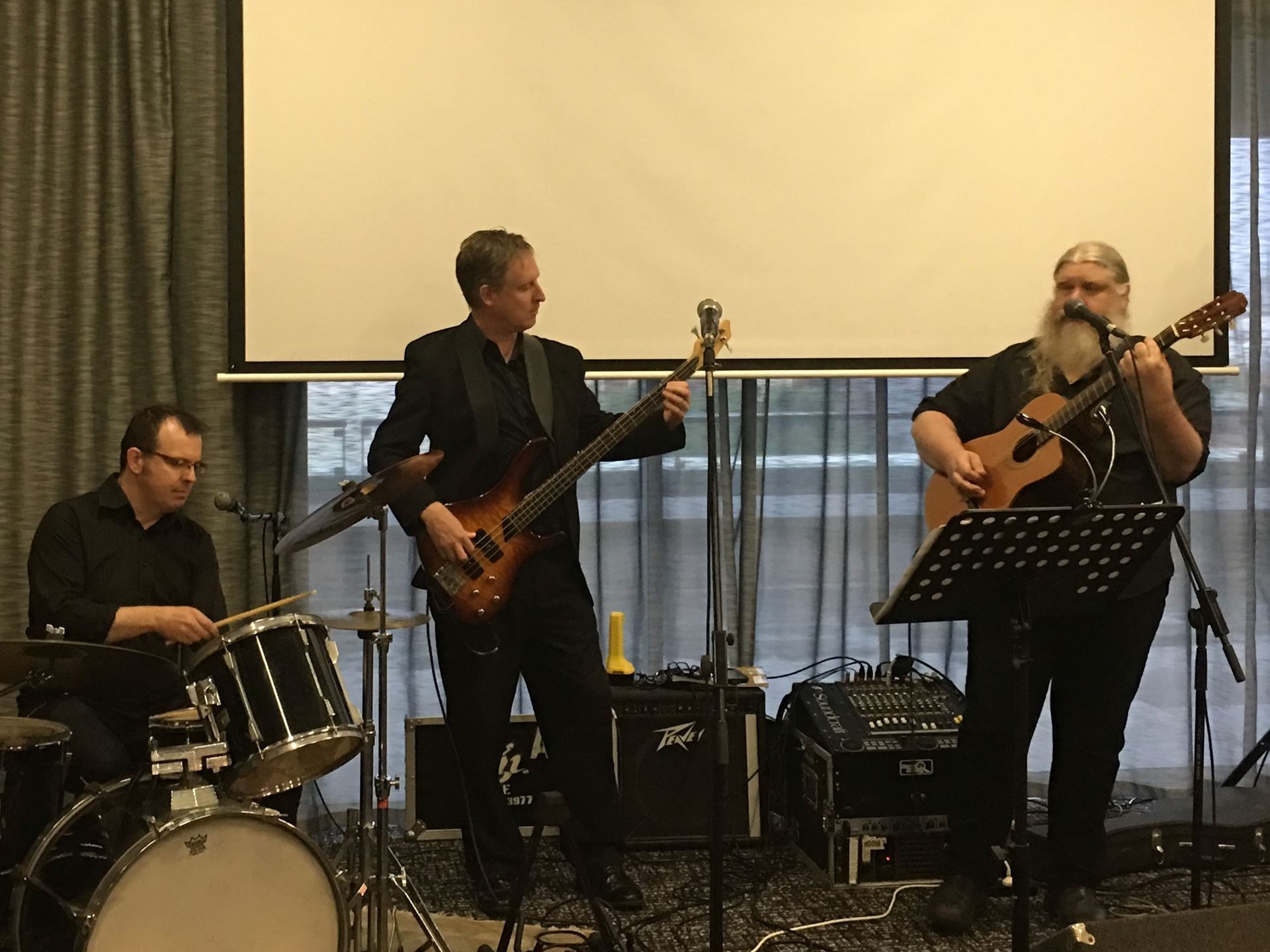|
NSW Branch 2018 Annual Lecture and Dinner
Following on from the J.B. Douglas Awards afternoon on 28 November, the NSW Branch was delighted to have Professor Ray Chambers present its Annual Lecture. Ray is a Professorial Fellow at the National Institute for Applied Statistics at the University of Wollongong, as well as an elected member of the International Statistical Institute and a Fellow of the American Statistical Association.

Professor Ray Chambers presented the Annual Lecture
On the wettest Sydney day in over 30 years, in which a month’s worth of rain arrived in just two hours, attendees might have been a little averse to hearing about technology designed to increase rainfall. But, drawing on over a decade’s worth of involvement in the field, Professor Chambers delivered on his promise of “a reasonably entertaining hour if nothing else” and provided a fascinating insight into the history, politics and scientific evaluation of such systems.
Ray began with a brief history of attempts at rainfall enhancement. In Australia, CSIRO was involved in experiments of “cloud seeding” — in which aeroplanes drop small particles into clouds — as early as the 1940s, but they produced inconclusive results. A competing technology, “ground-based ionisation”, proposed in the 1950s and developed in Russia in the 1980s, promised fewer environmental concerns, but had a high hurdle to overcome in convincing scientists that lab-based observations could be replicated in the open atmosphere.
An Australian private company licensed the technology and undertook several trials between 2007 and 2010. This was made difficult by the fact that a large federal grant for the work was cancelled upon the change of government, largely due to the perception of ground-based ionisation as an unproven “pseudo-science”. In attempting to provide a stronger scientific basis for claims about the technology, Professor Chambers described improvements in experimental design across the studies, such as moving to a randomised cross-over design, and the statistical challenges of estimating causal effects that need to take into account the level of natural rainfall and the wind direction.
Although the results of these studies were largely positive, with little government interest in funding further trials, the Australian-built technology was taken overseas. Since 2013 the government of Oman has funded six trials in the Hajar Mountains in the north of the country. The studies have employed spatio-temporally randomised designs as well as double-blind analyses, with a hurdle-like approach used to simultaneously model the presence/absence and amount of rainfall. Consistent with the Australian trials, although there appeared to be no effect on inducing rain to fall, there was a 10-20% increase in the amount of rain on wet days. Bootstrapping and block-permutation tests suggested a high level of confidence in this result.
Ray finished by describing the lessons he has learnt over the time of this research, with large data sets and sophisticated designs and analysis methods required to untangle the complexities of weather systems. He suggested that it is a rich area for further research, with the trial data being freely available. Despite the seemingly compelling results, he expressed a lament that this work is perhaps “nudging against a closed door” to wider acceptance, given the World Meteorological Organisation’s statement that strong statistical evidence is not enough without a clear description of the physical mechanism.

After the lecture, the Annual Dinner closed out the Branch’s activities for the year. The ever-popular entertainment was extra special this year, with Branch Vice-President Michael Stewart and his band “The 3 SDs” providing a great soundtrack (including a brief drum solo) for the evening.
Dr Mark Donoghoe, NSW Branch Councillor
The 3 SDs performing during the Annual Dinner





